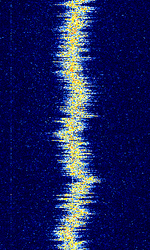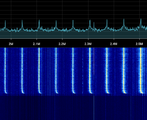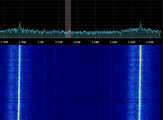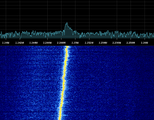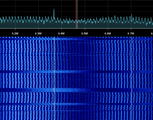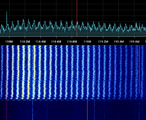Switching Electronic Interference
Unfortunately for analog enthusiasts, switching electronics (i.e. switched-mode power supplies, power converters, digital electronics, etc.) use inductors (coils) that unintentionally act as antennas. Common examples include inverters, AC adaptors, computers, monitors/TVs, fluorescent/energy efficient LED lighting, battery chargers of all sizes, etc. Due to the energy efficiency and thermal issues facing Linear power supplies, switching electronics are now found inside virtually everything that isn't a "dumb" resistive or inductive load (i.e. this usually does NOT include: stoves, toasters, mains-powered fans/motors, old-style incandescent/halogen lighting, etc.)
Manufacturers of electronic devices are required to keep RFRadio Frequency emissions below a certain threshold set by EMCElectromagnetic compatibility - Extent to which electrical appliances can withstand each others radiated fields standards, however, many of the cheap ones never go through proper EMCElectromagnetic compatibility - Extent to which electrical appliances can withstand each others radiated fields testing and are sold (illegally, in most jurisdictions manufacturers can be fined for failing to meet these guidelines). Even when devices meet EMCElectromagnetic compatibility - Extent to which electrical appliances can withstand each others radiated fields standards, they can still cause significant interference when poorly placed. Unshielded, switching electronics can be the cause of egregious amounts of electromagnetic interference (EMIElectromagnetic interference).
This kind of noise typically appears on the spectrum as peaks that are slightly unstable in frequency. Often, these peaks appear evenly spaced on a certain frequency range, and this spacing can often reveal the operating frequency of the switch-mode converter. Changes in load can change the noise characteristics, and as the converter warms up, the peaks often slowly drift in frequency. These peaks are sometimes confused with actual signals. Bandwidth and shape of these peaks can vary greatly, from less than 1 kHzKiloHertz (kHz) 10^3 Hz to tens of kHzKiloHertz (kHz) 10^3 Hz or more.
Demodulated audio from these peaks often sounds "noisy" or "dirty" and it may include mains frequency component or other tones.
Samples[edit]
Frequencies[edit]
Switch-mode power supply noise is often found on the VLFVery Low Frequency (3-30 kHz), MFMedium Frequency (300-3000 kHz), HFHigh Frequency (3-30 MHz), and VHFVery High Frequency (30-300 MHz) bands. It's less common on UHFUltra High Frequency (300-3000 MHz) and above. HFHigh Frequency (3-30 MHz) and lower bands are often strongly affected.
